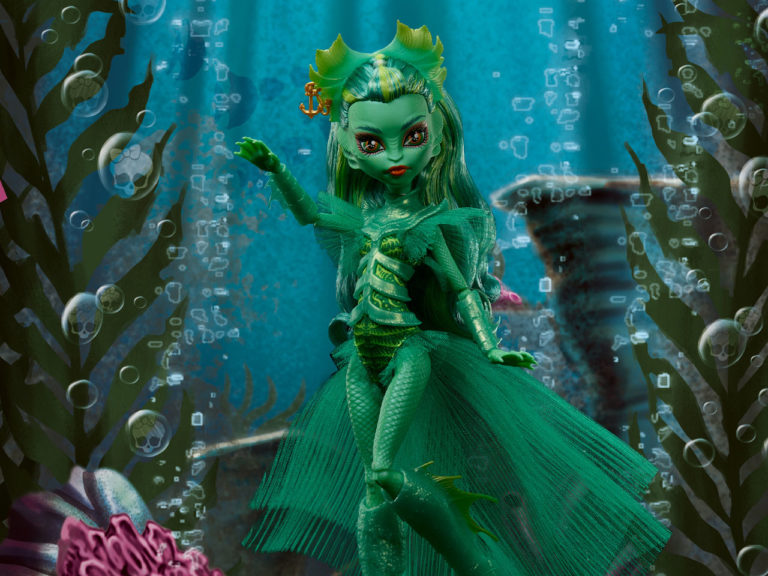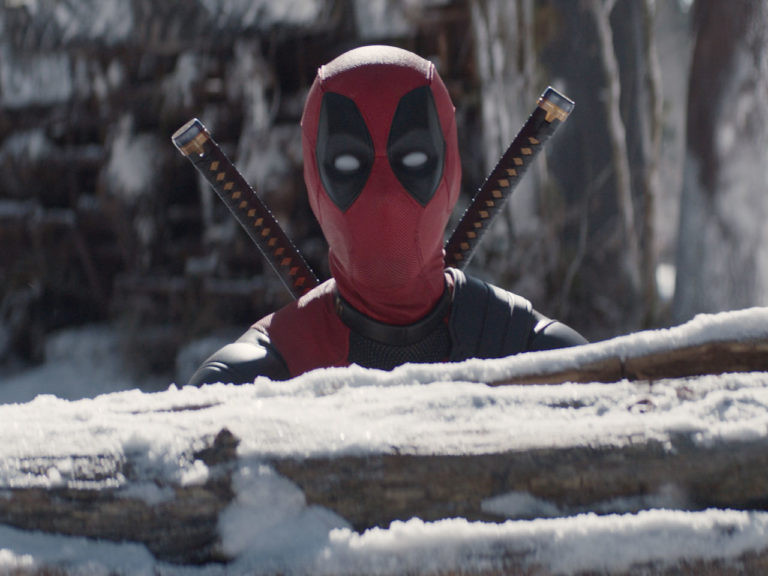

Will Roy Harper die, or will Jason Todd get there in time to stop Joker’s Daughter and Iron Rule from doing more damage than they already have? And even if he does, will Roy be able to accept his best friend’s brutal justice? And even if he will, will anyone care?
Why does this book exist?
The obvious answer to that question is that Red Hood/Arsenal #13 exists to tie up the current story arc, as well as the series itself. If you’ve been following along (which I haven’t–did some rapid recap this afternoon), you’ll remember that Arsenal recently found himself captured by some old associates–Iron Rule. Meanwhile, Red Hood finally “put down” Joker’s Daughter after foolishly believing that she wanted reform. A short meanwhile later, JD–whom Jason entrusted to paramedics–sliced and diced her attending medical professionals and escaped (with a little help from some friends). Last month’s #12 ended with JD holding a gun to Roy’s head, threatening to kill him to make Jason suffer. And we all held our breath–not because of suspense (there wasn’t any), but because of the long trail of twenty-page rotting literary corpses in Jason and Roy’s wake.
So how does it all end? There’s a fight. Unsurprisingly, the guys win. Unsurprisingly, someone has a problem with Jason’s methods. Unsurprisingly, it’s all pretty awful, written with a painful self-delusion masquerading as quasi-humorous self-awareness. Like that sentence I just wrote.
Nothing actually happens.
This book is ending (at least under its current name), so there needs to be some sort of resolution, but what we actually get this time around seems like it should have been tagged onto the end of a trimmed Red Hood/Arsenal #12, instead of stretched out into Red Hood/Arsenal #13. And since the last five pages consist of a goofy little Red Hood/Arsenal origin story, I’m all the more convinced that Lobdell ran out of story last month (or many years ago).

One of the most effective ways for a writer to encourage reader investment in a story is to write characters to whom the reader can relate. It’s far less effective when the character to whom you can most naturally relate is the guy getting his face melted by an incendiary arrow.
Without much story, we’re left with a long fight and a lot of bad dialogue. The fight is fairly bland, with Joe Bennet’s layouts failing to establish much motion, and relying far too heavily on closeup face shots. And oh, that dialogue. The difference between Roy and Jason’s methods should be sufficient for setting up the divide between them, and the end-of-bromance promised on the cover; but Lobdell instead sees fit to give Jason lots of short, snappy lines telling Roy (Roy = us, bruised and battered) exactly how they’re different:
This was never going to work out. Us. You have too much faith in people. I don’t have any. [while unmasked and awkwardly close to Roy’s ear] I’m sorry, I’m never going to be the hero you want me to be. I have every confidence in you–that you’ll stay the hero I know you are.
After that, the backup, which might have been fun in a different context, is just unbearably corny (and poorly executed). And to add insult to injury, the “good old days” feel of the artwork still uses a retconned Robin uniform and a more contemporary outfit for Speedy. Honestly, as I sit here straining for a metaphor to staple onto this whole book, all I can think of is the time I sat through an awkward Christmas Eve dinner only to unwrap a plastic container of winter-themed pencil erasers after the meal. After sitting through fifteen pages of an unnecessary, barely-moving finale to this series, I get this backup that–while certainly better than what came before–is still something tacky for which I have no use.
The good, the bad, and the Scott Lobdell Red Hood Omnibus
I have no ill will toward Scott Lobdell. He’s being paid to write books, and I don’t have to read them if I don’t want to (ok, well, that’s true most of the time, but I actually did have to read this particular issue). That said, I have no respect for his work. He occasionally–maybe even more often than not–has the kernel of a good idea, but fails to deliver in the execution pretty much every time. For me, that makes him a much better candidate for assistant editor than writer. And yet DC continues to employ him as a writer. His books aren’t at the bottom of the sales charts, but I hardly think it’s fair to give him credit for that–with characters like the Teen Titans and Jason Todd, you’re bound to sell some copies based on name recognition alone. Sprinkle in some covers featuring Starfire and three square inches of purple cloth, and you’re likely to pile on some incremental sales.
I wish that we could look at Red Hood/Arsenal #13 and say, “well, that really stinks, but on the bright side, the series is over.” But we can’t say that. Late next month, when the summer sun is nearing its hottest, DC will once again pay Lobdell to put out another stinker. Don’t get me wrong–I would love to see him finally break through with something that I can get behind, but optimism would be foolish given his body of work in the past several years. The best I can hope for is that he’ll surprise us and knock it out of the park, but I’m not holding my breath.
Recommended if…
- You wear a disembodied face for a mask because you’re obsessed with its original owner.
- This is the only thing on the magazine rack in the prison library.
Overall
I don’t even get to say “I’m glad it’s over,” because it’s not. Amidst promises of rebirth, hope, and optimism, DC continues to defy sense and publish a book and an author that have both failed to gain any significant traction for some time. A poor final issue of Red Hood/Arsenal might have otherwise made me hungry for Rebirth‘s Red Hood and the Outlaws; but given Lobdell’s continuing authorship, and the needlessly extended plot of the present issue, this “final” chapter instead feels like gratuitous, disrespectful money-grubbing.
SCORE: 1/10


